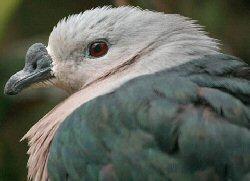Territory of American Samoa

Birding American Samoa
American Samoa is an unincorporated territory of the United States located in the South Pacific Ocean, southeast of the sovereign state of Samoa, formerly known as Western Samoa. The main (largest and most populous) island is Tutuila, with the ManuÊ»a Islands, Rose Atoll, and Swains Island also included in the territory. American Samoa is part of the Samoan Islands chain, located west of the Cook Islands, north of Tonga, and some 300 miles (500 km) south of Tokelau. To the west are the islands of the Wallis and Futuna group. The 2000 census showed a total population of 57,291. The total land area is 200.22 km² (77.305 square miles). Consisting of five, rugged volcanic islands and two coral atolls, it is frequently hit by typhoons between December and March, due to its positioning in the South Pacific Ocean.
-
Number of bird species: 67
-
iGoTerra Checklist
iGoTerra ChecklistFatbirder Associate iGoTerra offers the most comprehensive and up to date birds lists on the web
-
A Guide to the Birds of Fiji and Western Polynesia
(including American Samoa, Niue, Samoa, Tokelau, Tonga, Tuvalu and Wallis & Futuna) | By Dick Watling | Dick Watling |2004 | Paperback | 16 Full Colour Plates; Figures, Tables & Maps; 272 pages | ISBN: 9829030040 Buy this book from NHBS.com -
Birds of Samoa and American Samoa
(Pocket Identification Guide) | by D Watling & J Atherton | Conservation International | 2008 | Unbound | 21 pages, Laminated concertina fold out guide, colour illustrations | ISBN: 9781934151181 Buy this book from NHBS.com
-
National Park of American Samoa
WebsiteSatellite ViewOn oceanic islands, birds are usually the most abundant and diverse animals. This park is home to more than 35 species, both resident and migratory, including seabirds, water birds, forest birds, and shore birds. The cliffs and sea stacks are ideal nesting habitat for tropical seabirds, while the rainforest is home to collared kingfishers, cardinal and wattled honeyeaters, bluecrowned lories, Samoan starlings, purple-capped fruit doves, many-colored fruit doves, Pacific pigeons, and banded rails. -
Rose Atoll National Wildlife Refuge
WebpageSatellite ViewRemote, tiny and unprotected, Rose Atoll stands alone at the eastern extreme of the Samoan archipelago, 14 degrees south of the equator and southernmost among National Wildlife Refuges. Among the world's smallest and most pristine atolls, Rose is a nearly square reef surrounding an azure lagoon dotted with coralline bommie towers. Tiny Rose Island rises above the waterline at the atoll's eastern corner. Rose Atoll's beauty lies not only in its geometry but in the vibrant pink hue of its reefs it is one of the few atolls whose primary element of construction is the pink calcareous coralline alga Porolithon … (continued) -
Wetlands
WebsiteSatellite ViewAmerican Samoa has both saltwater and freshwater swamps and marshes, as well as cultivated and ruderal wetlands and a number of perennial streams. Much the most important wetlands are the mangrove swamps and coastal freshwater marshes
-
Natural History Guide To American Samoa
PDFArticles on flora and fauna
-
Photographer - Phillip Colla
GalleryA number of different galleries of bird photographs taken in American samoa

